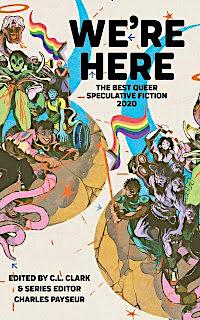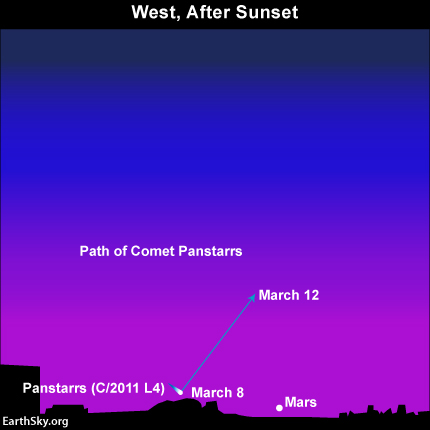(1) VISUAL EFFECTS HISTORY. SF Concatenation’s Jonathan Cowie recommends BBC Radio 4’s progam Unreal: “The VFX Revolution, A Long, Long Time Ago…” – the first of a three-episode series about SF cinematic special effects from 2001 to Star Wars and Close Encounters.
The story of how visual effects changed and changed cinema told from the inside by the Oscar winning Paul Franklin. In 1975, in a nondescript warehouse in Van Nuys, George Lucas and John Dykstra created a visual effects startup that would make history. Industrial Light & Magic. A group of many talents spent well over a year in R&D to perfect the dream of motion control before X-Wings and the Millennium Falcon could soar. Meanwhile the magic eye of Douglas Trumbull and his team was creating the light show for Steven Spielberg’s Close Encounters. It was the beginning of a revolution.
With the voices of Robert Blalack, John Dykstra, Richard Edlund, Dennis Muren & Doug Trumbull.
(2) SPLISH SPLASH. In the latest “Building Beyond” – “Liquid Assets” Sarah Gailey is joined by Wen Wen Yang and Meg Elison to play with this writing prompt:
The Cosmic Orb has issued a new Natural Law: at random intervals for the rest of time, the wealthiest 10% of humans in the universe will spontaneously dissolve into potable water.
(3) HUGO REFORM OF THE DAY. John Scalzi has good reasons to be confident about the second category. Would I be mistaken to underrate his chances of winning the first one?
(4) ON THE CASE. In the Washington Post, Mark Athiatakis discusses how it’s not really possible to organize your book collection as he comes up with several unusual and funny ways to organize your books. “Why bother organizing your books? A messy personal library is proof of life”.
… I recently went hunting for my copy of Lydia Davis’s “Essays One,” a collection of nonfiction that revealed itself stuffed sideways on a shelf where the works of Philip Roth and Marilynne Robinson first took up residence. That would’ve been an unthinkable genre incursion when I’d first moved in, and the search itself revealed more shelving indignities. Locating Davis meant scanning through books that are no longer so much shelved as much as piled in a sedimentary manner throughout the office….
(5) THE ODIFEROUS AGE. WIRED’s Jason Kehe says it’s not Amazon’s horn that’s tooting in Solos: “The Futuristic Stink of Amazon’s Science Fiction”.
…Amazon has shat out science-fiction programming for years, and it ranges, on the smell-o-meter, from the merely obnoxious to the just plain noxious—a flatulence that fluctuates. Early on, the company mostly Philip K. Dick’d around, first with an adaptation of Man in the High Castle and then with Electric Dreams, an anthology series based on that author’s short stories. The former collapsed in due course, and the latter was never more than off-brand, harder-trying Black Mirror, but at least neither tried to speak to our bowels.
With Solos, Amazon stoops to a condescending science fiction that’s just like us, farts and all….
(6) SPACE JAM 2 PROMO. Bugs Bunny and LeBron James pay a visit to the Metropolis of Superman: The Animated Series in a new clip from Space Jam: A New Legacy. [Via Gizmodo.]
(7) MEMORY LANE.
- 1990 — Thirty-one years ago, Another Way to Travel, the second album by Minneapolis based Cats Laughing comes out. Genre wise, it’s notable as it has Emma Bull, John Ford and Stephen Brust as lyric writers. The cover illustration was done by Terri Windling (the original artwork was given to Cat Eldridge some years back by Pamela Dean’s husband) The vehicle was known as the Catmobile and was used to transport the band. It owned by Brust, and it was a Cadillac ambulance that had been painted yellow, light blue, and dark blue, with murals. You can listen to “For it All” here.

(8) TODAY’S BIRTHDAYS.
[Compiled by Cat Eldridge.]
- Born July 7, 1907 — Robert Heinlein. Let’s have Paul Weimer tell about his favorite Heinlein works: “If I had to pick one favorite Heinlein novel, and that’s a tough road to hoe, I am going to go with the novel I’ve re-read the most and it’s probably not going to be the one you think. It’s Glory Road. Yes, Glory Road. The back matter once the quest is done can be overcooked, but Heinlein had a keen eye for epic fantasy quests, the good and the bad, long before the rise of Tolkien clones. It was an early Heinlein for me, and the novel has stuck with me since, with a number of audio re-reads. I survived a boring drive across the flatness of the Great Plains by listening to the adventures of Oscar Gordon.” // If I had to pick one Heinlein story, I have a strong fondness for All You Zombies, which encapsulates all the potential paradoxes of time travel in a way that has been done at greater length, but not, I’d argue, with better effect. (The movie Predestination with Ethan Hawke is pretty darned good by the way). Oh, and my favorite book ABOUT Heinlein is Farah Mendelsohn’s The Pleasant Profession of Robert Heinlein. (Died 1988.)
- Born July 7, 1919 — Jon Pertwee. The Third Doctor and one that I’ll admit I like a lot. He returned to the role of the Doctor in The Five Doctors and the charity special Dimensions in Time for Children in Need. He also portrayed the Doctor in the stage play Doctor Who – The Ultimate Adventure. After a four-year run there, he was the lead on Worzel Gummidge where he was, errr, a scarecrow. And I must note that one of his first roles was as The Judge in the film of Toad of Toad Hall by A. A. Milne. (Died 1996.)
- Born July 7, 1936 — Lisa Seagram. I’m noting her here because she was in the Batman episode “Louie, the Lilac” as Lila in which Milton Berle played the title character. She also had one-offs in both The Man from U.N.C.L.E. and The Girl from U.N.C.L.E., plus My Favorite Martian and Bewitched. (Died 2019.)
- Born July 7, 1948 — Kathy Reichs, 73. Author of the Temperance Brennan series, the basis of the Bones series, which is genre adjacent given it’s connected to the Sleepy Hollow series, and she’s also the author of Virals, a YA series about a group of young adults with minor super powers.
- Born July 7, 1959 — Billy Campbell, 62. There are some films so good in my memory that even the Suck Fairy can’t spoil them and The Rocketeer in which he played stunt pilot Cliff Secord is one of them. And IDW did a hardcover edition called Dave Stevens’ The Rocketeer: The Complete Adventures which Amazon has it for a mere twenty bucks! The ePub is available from the usual suspects for a mere five dollars and ninety-nine cents.
- Born July 7, 1968 — Jeff VanderMeer, 53. Ok, I’ll admit that I’m ambivalent about the Southern Reach Trilogy and am not sure if it’s brilliant or not though I’ll say it is quite disturbing. I also will say the pirate anthology he and his wife Anne did, Fast Ships, Black Sails, is quite tasty reading.
- Born July 7, 1980 — Martin Lewis, 41. He’s been the reviews editor for the British Science Fiction Association’s Vector critical journal for twenty years now. He’s written one book, SF Writers on SF Films from Akira to Zardoz.
- Born July 7, 1987 — V. E. Schwab, 34. I’m very pleased with her A Darker Shade of Magic which explores magicians in a parallel universe London. It’s part of her Shades of Magic series. Highly recommended. Her Cassidy Blake series is also good provided you’re a Potter fan as she makes a lot of references to that series.
(9) COMICS SECTION.

- Frank and Ernest meet an innovative cave painter.
(10) THE BEST. Publishers Weekly has a short and enthusiastic review of We’re Here: The Best Queer Speculative Fiction 2020 edited by C.L. Clark and series editor Charles Payseur.
Clark (The Unbroken) and Payseur (The Burning Day) present a diverse, well-crafted anthology of queer speculative fiction, bringing together 16 stories from both established and emerging authors….
(11) JEOPARDY! Andrew Porter was glued to his set when tonight’s episode of Jeopardy! challenged contestants with this:
Category: Chapter of the 19th Century Novel.
Answer: By H.G. Wells, “The reversion of the beast folk”
Wrong question: “What is ‘The Time Machine’?”
Right question: “What is ‘The Island of Dr. Moreau’?”
(12) PINT SIZE. Movies on Glass is offering a Star Trek: Deep Space Nine Quark’s Bar Pint Glass. Bottom’s up! (if you want to read the CBS license legalese).
- SPECIAL EDITION IN UNIVERSETM: The Star Trek: Deep Space Nine Quark’s Bar pint glass features the Quark’s Bar logo digitally printed in full color.
- LICENSED COLLECTIBLE MERCHANDISE: Officially licensed by CBS Consumer Products. CBS legal line is etched in the base of the glass.

(13) DOES ANYBODY REALLY, REALLY, REALLY KNOW WHAT TIME IT IS. [Title by Daniel Dern.] “For Precision, the Sapphire Clock Outshines Even the Best Atomic Clocks” declares IEEE Spectrum.
… The new clock—also known as the Sapphire Clock—isn’t better than an atomic clock; it’s different. That’s because accuracy and precision are different things: Accuracy is how well a clock can measure a true second, now defined as the time it takes cesium atoms under controlled conditions to oscillate between two energy states exactly 9,192,631,770 times. Since 2013, even more accurate types of atomic clocks have been built, but over 400 atomic clocks based on cesium-133 atoms are still used to create civil time across the globe. If you’re reading this article on a smartphone or a laptop, the time displayed on the edge of your screen is derived from one of those atomic clocks.
For many applications, such as satellite-based global positioning systems, accuracy is paramount. And make no mistake, even cesium atomic clocks are stunningly accurate. The NIST-F2 cesium clock operated by the U.S. National Institutes of Standards and Technology in Boulder, Colo., is so accurate that it would have to run for 300 million years to gain or lose a second.
But for some applications, accuracy is less important than precision. Precision has to do not with delineating the perfect second but rather with creating extremely regular ticks, or oscillations. Imagine a game of darts. Atomic clocks are able to land all their darts, or oscillations, broadly around the bull’s-eye so that the average position is right on target, even though any given dart might be a centimeter or two away from dead center. Luiten’s device doesn’t aim for the bull’s-eye: instead, it is able to land all its darts at exactly the same point on the dartboard. In other words, each tick is really, really, really just like another….
(14) WHY, ‘TIS CLEAR AS IS THE SUMMER SUN. Transformers: War for Cybertron Trilogy – Kingdom is coming July 29 to Netflix. Here’s the story line —
Now the Autobots must team up with the Maximals to confront the Decepticons, who have joined forces with the Predacons, in the race to find the missing AllSpark. However, the Predacons are in control of the Golden Disk, a mysterious artifact which has a personal connection to Megatron and gives him an untold advantage over his enemy, Optimus Prime. Which faction will triumph in the final battle that will decide the fate of Cybertron’s future?
(15) OUT THUNDERING THE LIZARDS. Chicxulub is called “The comet that killed the dinosaurs” – Geology Page listens to a theory about its origins.
…The enduring puzzle has always been where the asteroid or comet that set off the destruction originated, and how it came to strike the Earth. And now a pair of Harvard researchers believe they have the answer.
In a study published in Scientific Reports, Avi Loeb, Frank B. Baird Jr. Professor of Science at Harvard, and Amir Siraj ’21, an astrophysics concentrator, put forth a new theory that could explain the origin and journey of this catastrophic object and others like it.
Using statistical analysis and gravitational simulations, Loeb and Siraj show that a significant fraction of a type of comet originating from the Oort cloud, a sphere of debris at the edge of the solar system, was bumped off-course by Jupiter’s gravitational field during its orbit and sent close to the sun, whose tidal force broke apart pieces of the rock. That increases the rate of comets like Chicxulub (pronounced Chicks-uh-lub) because these fragments cross the Earth’s orbit and hit the planet once every 250 to 730 million years or so.
“Basically, Jupiter acts as a kind of pinball machine,” said Siraj, who is also co-president of Harvard Students for the Exploration and Development of Space and is pursuing a master’s degree at the New England Conservatory of Music. “Jupiter kicks these incoming long-period comets into orbits that bring them very close to the sun.”
It’s because of this that long-period comets, which take more than 200 years to orbit the sun, are called sun grazers, he said.
“When you have these sun grazers, it’s not so much the melting that goes on, which is a pretty small fraction relative to the total mass, but the comet is so close to the sun that the part that’s closer to the sun feels a stronger gravitational pull than the part that is farther from the sun, causing a tidal force” he said. “You get what’s called a tidal disruption event and so these large comets that come really close to the sun break up into smaller comets. And basically, on their way out, there’s a statistical chance that these smaller comets hit the Earth.”
(16) THE LIGHTS IN THE SKY. Auroras on Mars occur not only at the poles but all around the planet. The Emirates Mars Mission is collecting images. “Mars Has Auroras and a U.A.E. Spacecraft Captured New Pictures of Them” – photos at the New York Times.
When barrages of charged protons and electrons erupted from the sun head our way, Earth’s magnetic field deftly deflects them around the planet. This buffeting generates shimmering, glowing curtains of color known as the aurora borealis in the Northern Hemisphere’s polar regions, and aurora australis in the south.
That same phenomenon happens on Mars, too. But there it is not just the northern lights and southern lights, but also the equatorial lights, mid-latitude lights, eastern lights, western lights — all around the planet.
The Hope spacecraft launched by the United Arab Emirates and orbiting the red planet since February, has captured unique images of these dancing atmospheric lights, known as discrete auroras.
Mission officials released the pictures on Wednesday.
“It will allow new doors of study to be opened when it comes to the Martian atmosphere,” said Hessa al-Matroushi, the science lead for the first interplanetary mission by the U.A.E., “and how it interacts with the solar activity.”
(17) VIDEO OF THE DAY. In “Honest Game Trailers: Dark Alliance,” Fandom Games says this D&D line extension is “a story that had zero effort put into it” and is so boring “It’s less like watching a car crash and more like going to the DMV.”
[Thanks to Cat Eldridge, Mike Kennedy, Andrew Porter, Daniel Dern, Alan Baumler, SF Concatenation’s Jonathan Cowie, David K.M. Klaus, Martin Morse Wooster, JJ, Michael Toman, and John King Tarpinian for some of these stories. Title credit belongs to contributing editor of the day Mister Dalliard (a 2018 suggestion).]










